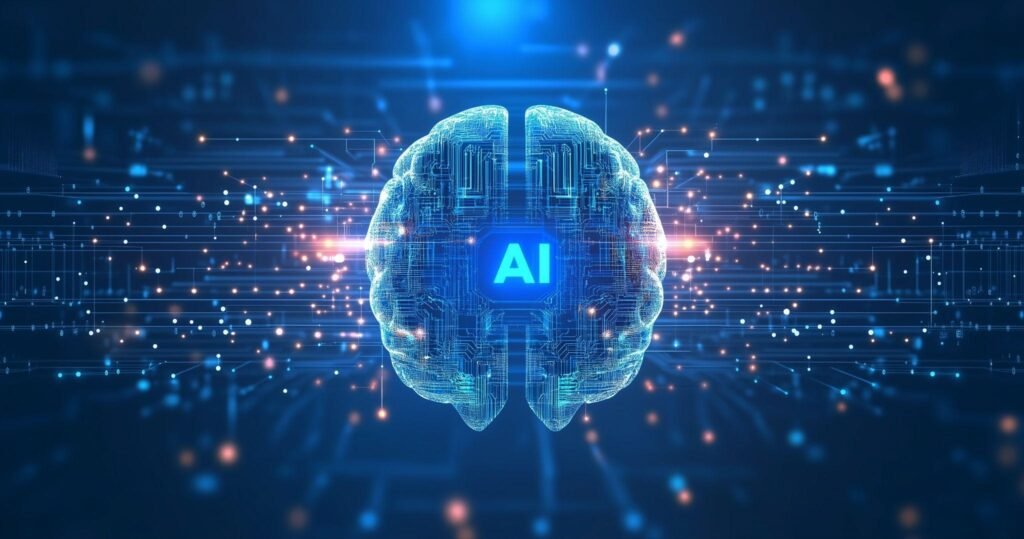The Power of Many: Agentic AI Explained
 Manasa V
Manasa V
If you're even a little curious about how AI works or have heard terms like “agents,” “multi-agent systems,” or “Agentic AI,” but didn't really get what they meant you're in the right place.
Let’s dive into this fascinating world together. No jargon, no heavy tech just plain, relatable fun.

What’s Agentic AI, Anyway?
Imagine you have one super-smart robot assistant . It can do a bunch of things answer questions, plan your day.
Now imagine you had a team of these robots, all talking to each other, dividing work, learning from one another, and solving complex problems together.
That’s Agentic AI where multiple AIs ("agents") work together like a group of tiny digital teammates to complete a goal.
Think of it like:
One AI = a smart intern
Agentic AI = an entire department of experts all collaborating!
How Do These AI Agents Work?
Agentic AI is all about autonomy + teamwork.
Each agent:
Has its own brain (can take actions and make decisions independently).
Communicates with other agents to share knowledge or coordinate tasks.
Can be specialized one might be a planner , another a writer , another a researcher .
Together, they:
Break down big problems into small tasks
Solve each piece efficiently
Recombine the results to produce something amazing
This is how complex AI systems like AutoGPT and ChatDev work.
A Tasty Analogy: Pizza Night!
You want pizza for dinner. Yum!
Here’s the solo AI approach:
You tell one AI to "make pizza." It does all the research, kneads the dough, makes sauce, bakes the pizza… everything on its own. Takes time.
Now the agentic approach:
One agent finds the recipe
Another orders ingredients online
One preps the dough
Another sets the oven
And one final agent delivers the pizza to your table
Result: Faster, smoother, and probably a better pizza.
Under the Hood: How Agents "Think" and "Talk"
Each AI agent in an Agentic AI system typically runs on a modular architecture, meaning it's designed with specific capabilities like planning, reasoning, decision-making, or communicating. These agents often operate as independent microservices, communicating over APIs or message queues using protocols like REST, gRPC, or even WebSockets in real-time systems.
Internally, many agents use models like LLMs (Large Language Models), reinforcement learning, or rule-based logic, depending on the use case. The real magic happens when they use shared memory structures (like vector databases or shared JSON objects) to collaborate and avoid doing duplicate work.
Planning, Looping, and Self-Reflection
Modern Agentic AI systems aren't just about assigning tasks. They often include something called planning agents or orchestrators, which analyze a goal, break it into subtasks, and assign them to other agents dynamically.
Some frameworks, like AutoGPT or CrewAI, use an agent loop a cycle of:
Planning
Acting
Reflecting
Re-planning if needed
This loop makes agents more resilient and goal-aware. If something fails or hits a dead end, the agent can reflect on what went wrong and try a new strategy just like a human would.
Popular Tools & Frameworks Powering Agentic AI
If you're a dev or aspiring techie, here are a few frameworks and tools that are enabling Agentic AI development:
LangChain: A Python/JavaScript framework to build LLM-powered agents that can access memory, tools, APIs, and more.
AutoGPT: An experimental open-source project that chains multiple GPT-4 calls together to create autonomous agents.
CrewAI: A lightweight library for orchestrating teams of AI agents with defined roles and tasks.
OpenAI Functions API: Allows LLMs like GPT to call tools, run functions, or communicate with APIs as part of multi-agent workflows.
ReAct Pattern (Reason + Act): A technique for LLM agents to reason step-by-step and take actions using tools, then reflect before the next move.
These tools make it easier to build, test, and deploy multi-agent systems that interact not just with humans but with each other.
Why Is This a Big Deal?
Because the future of AI is moving from:
"One big brain" → "Many smaller, smarter minds"
Benefits of Agentic AI:
Scalability – More agents = more power
Flexibility – Agents can swap roles or specialize
Resilience – If one fails, others can take over
Creativity – Diverse agents bring diverse ideas
And let’s not forget it’s just cooler.
Wrapping Up
So next time someone asks you what Agentic AI is, just say:
“It’s when multiple smart AIs team up like the Avengers to solve problems faster and better.”
Thanks for joining me on this ride! If you enjoyed it, stay tuned for more tech explained in a fun, friendly way.
Subscribe to my newsletter
Read articles from Manasa V directly inside your inbox. Subscribe to the newsletter, and don't miss out.
Written by

Manasa V
Manasa V
👩💻 Tech Consultant @ Microsoft 💡 Curious mind diving into AI, code & future trends 🚀 Exploring the why and how of everything tech 📚 Forever learning. Always vibing with innovation.